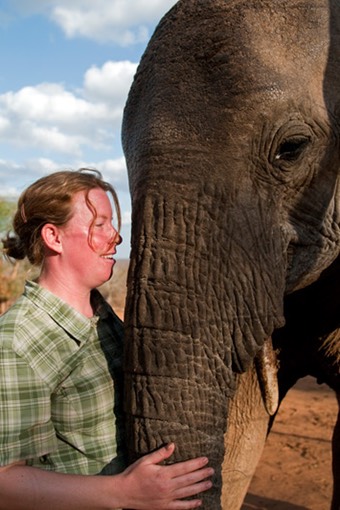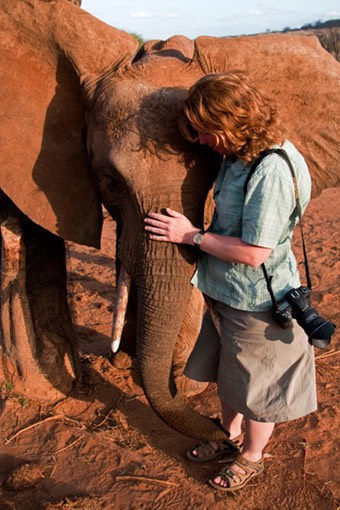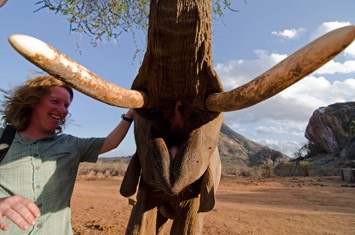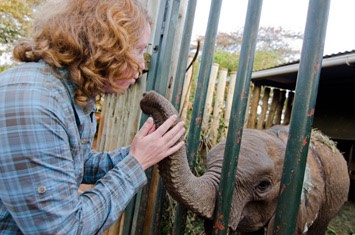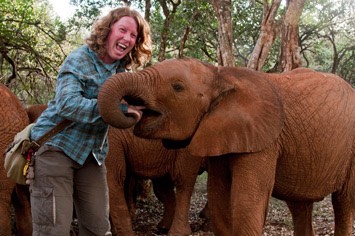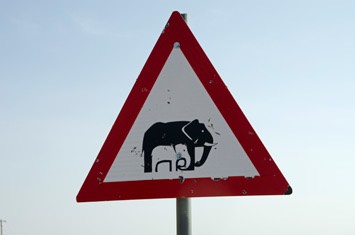
We love Kenya with its outstanding wildlife and friendly people. This year we wanted to visit during the time of the great migration, when the Masai Mara promised a unique spectacle. We have a special interest in elephants and they featured prominently in our safari. What follows is a concise photo story of our safari. For a full-on day to day account of our adventure and more photos check out our complete illustrated diary and check out our list of mammal species seen.
From 1st to 30th September 2011, we drove through Kenya in a hired classic LandCruiser (www.cruisingcruisers.com) on a self-drive camping safari. The footprints on the map mark the places we stayed: Nairobi, the Masai Mara, Meru, Samburu / Buffalo Springs, Nakuru and Tsavo East (Voi and Ithumba). Again, we took along our excellent cook Charles (www.emaiyansafariadventures.com), who had accompanied us on our previous safari in 2008.
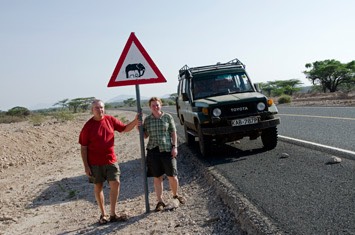
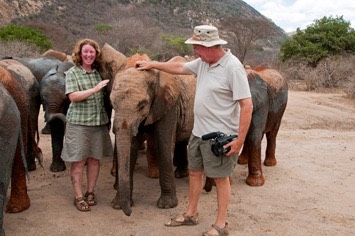
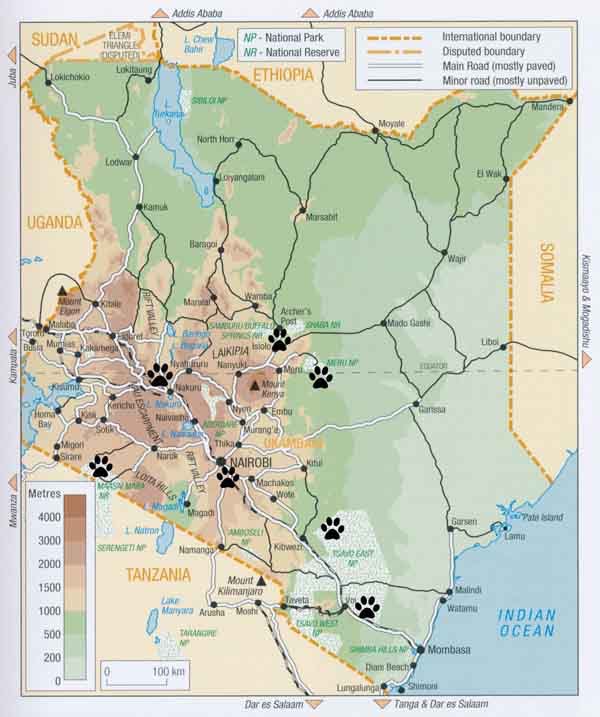
We timed our safari to see the great migration of wildebeest and zebras in the Masai Mara National Reserve. It was astonishing to see the rolling plains filled with animals as far as the eye could see! We lingered over the sight of zebras crossing a small river - the water only came up to their knees - but zebras are so photogenic and each has a unique stripe pattern.

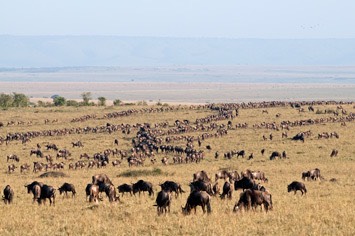

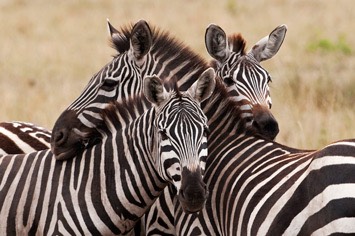
With such a great concentration of prey animals, big cats were never far away. We saw many lions at close quarters, including this handsome male enjoying a sumptuous breakfast of fresh young wildebeest caught in the night. The Mara lions are accustomed to visitors, posing for the camera - when they are not fast asleep, which they are for most of the day. In contrast, the fierce lions of Tsavo East (bottom right) remain aloof and cultivate their image as decendents of the infamous man-eaters of Tsavo.


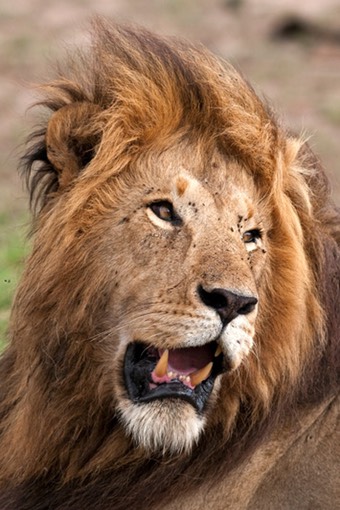
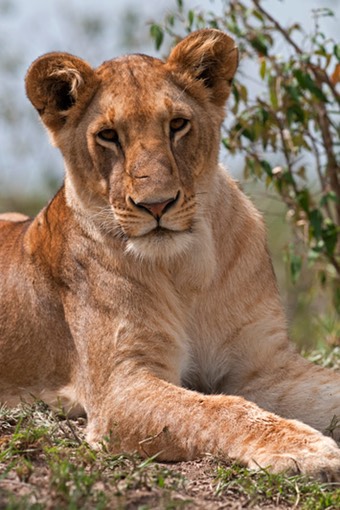
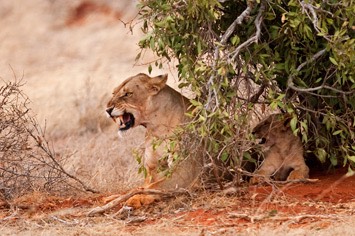
Although we saw cheetahs in the Masai Mara, our best encounters were in Meru National Park, where we were alone with these beautiful animals. Early one morning we found a mother and her two nearly full grown cubs. Mama was diligently hunting, but for the two youngsters this was too boring, so they climbed trees, did gymnastics and tried sneaking up on our car. The next day we were witness to a kill, when another female cheetah hurled herself onto a kudu right next to the car.
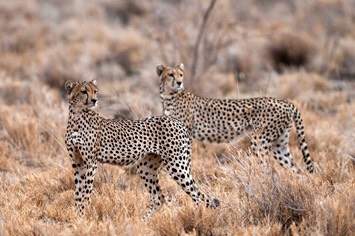
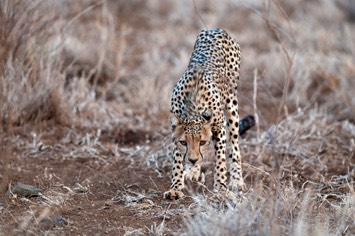
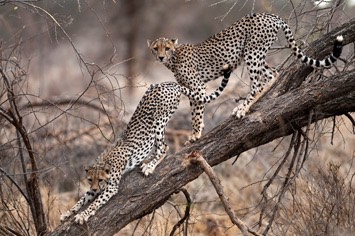
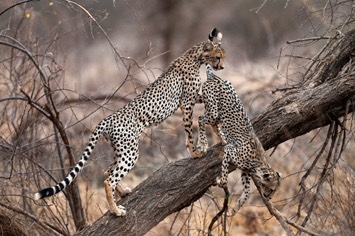
Kenya boasts a spectacular diversity of birds, some stunningly beautiful while others are just plain weird looking. These are just a few of the many species we saw. Clockwise from top left: lilac-breasted roller, white-browed coucal, vulturine guineafowl, helmeted guineafowl and white-bellied bustards.
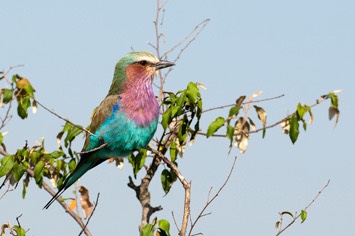
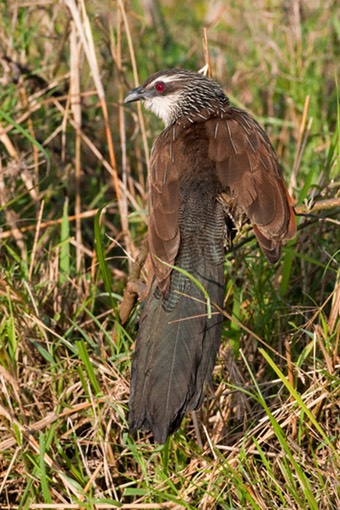
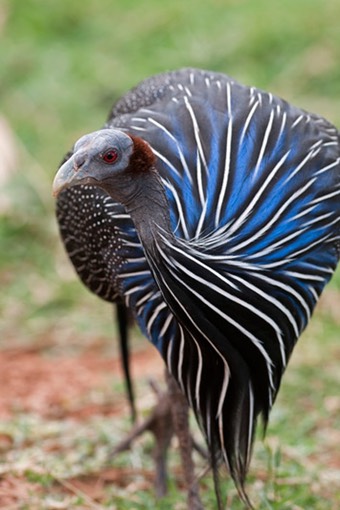
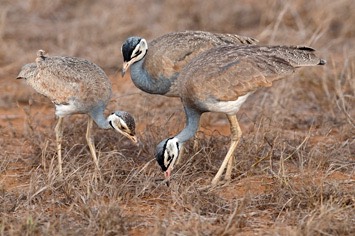
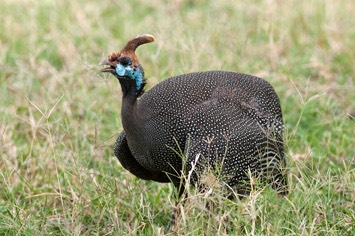
These are some of the more scary African mammals. Buffaloes (top left) don’t seem to appreciate a joke – when Mick insulted the intelligence of an old bull standing in our way he immediately charged and chased the car across slippery mud! Hippos (top right) kill more people than lions, although it’s hard to believe that at siesta time. The white rhino (bottom left) is actually a rather peaceful lawnmower, but its relative the black rhino (bottom right) can be bad tempered and unpredictable!
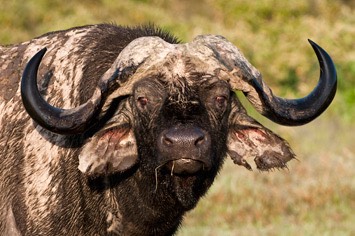

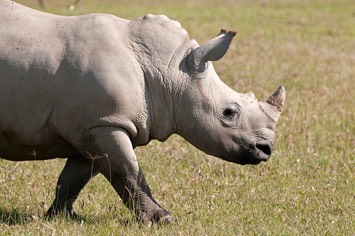
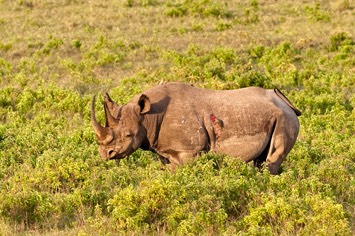
The Masai giraffe (above) were generally very friendly, and allowed us to get quite close in the car. They are relatively dark brown, with a wide cream-coloured lattice pattern. The reticulated giraffe (below) lives in drier areas, like here in Samburu / Buffalo Springs National Reserve, where we saw many of these incredibly elegant rufus-brown antelopes. The spectacle of males fighting was like watching a slow motion dance, as they tried to butt each other’s necks.
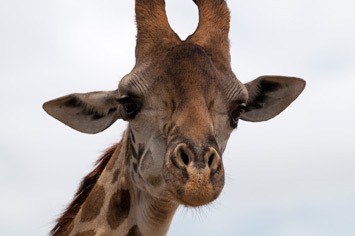

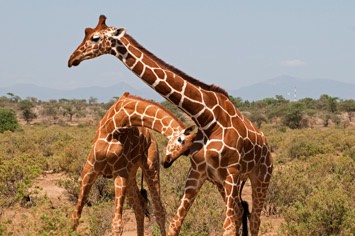
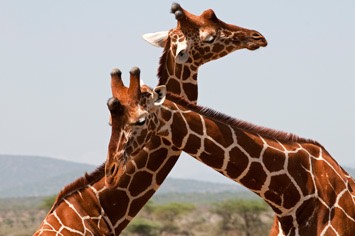
Elephants in the Masai Mara are grey, while those in Samburu are a rich brown, thanks to the ochreous soil there. In the Mara we watched a very young calf suckling (top left), while in Samburu there did not appear to be as many calves as on our previous visit three years before. The daily routine for elephants in Samburu included a siesta in the shade of an acacia tree, followed by a refreshing swim in the Ewaso Ngiro ("brown water") River.
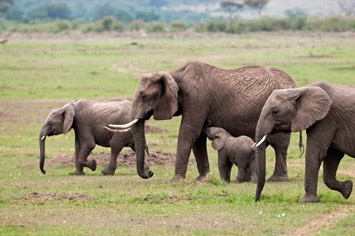
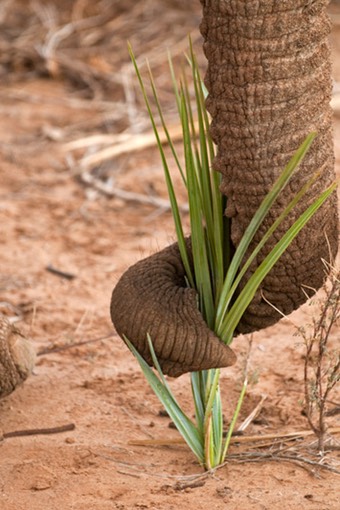
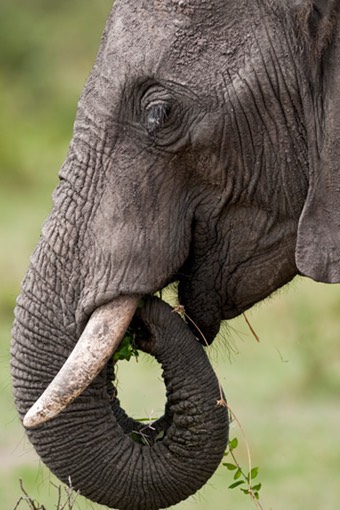
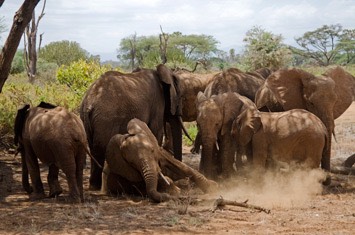
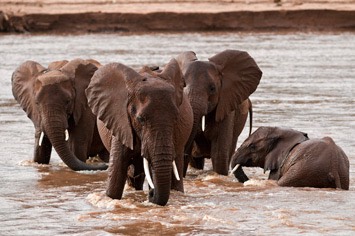
Here are a few scenic impressions of Samburu / Buffalo Springs (above) with Ololokwe, the sacred mountain of the Samburu tribe, and from Ithumba in Tsavo East (bottom left). Meru National Park was very dry during our visit and had few green bushes or trees, but plenty of thorn bushes (bottom center) and leafless baobab trees (bottom right). A few months after our visit, the rainy season had started and transformed all these parks into a green paradise!
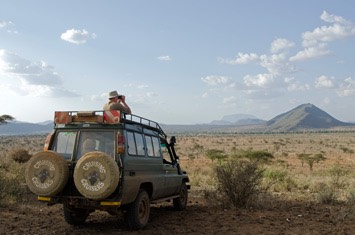
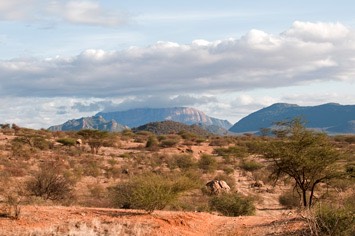
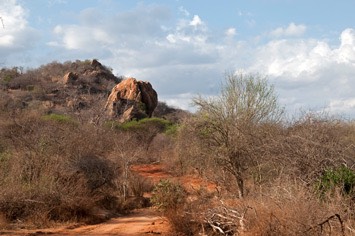
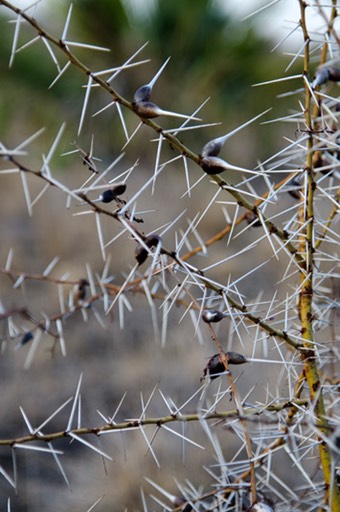
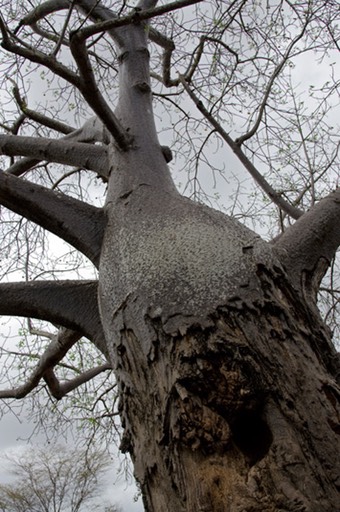
Gazelles and antelopes are prominent in all the parks, although some have restricted ranges. These are just a few of the many species we saw: water bucks (Meru, top left), oryx (Samburu, top right), a male lesser kudu (Meru, below left) and Kirk's dik-dik. Dik-diks always live as a couple, so our little joke when we saw one was to point out Dik and ask where Dik was. Dik-diks are tiny, little bigger than a hare, and bigger cats find them very tasty!
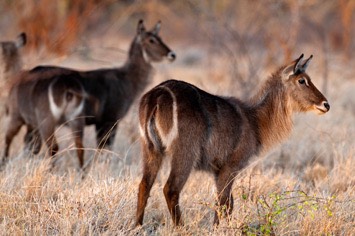
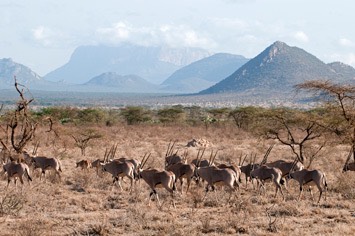
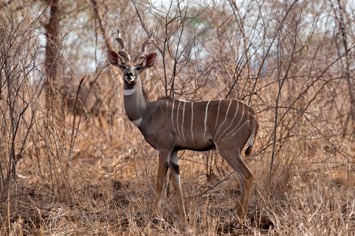
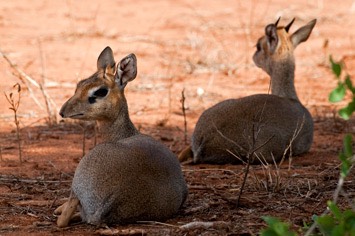
Here is a miscellany of some other species we got to see along the way. In Samburu there were many new-born impala calves (top left): the mothers split off from the herd and give birth alone. Other specialties of the arid Samburu region are gerenuk (top center) which stand on their hind legs to browse high in the bush like wannabe giraffes, and the densely striped Grevy's zebras (above right). Baboons (bottom left and center) are everywhere, and we had to be careful that they did not steal our food from the camp. In Samburu we set off at dawn to see nocturnal species like the honey badger (bottom right) on its way home to bed.
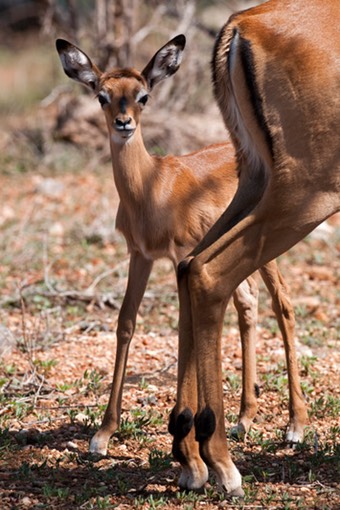
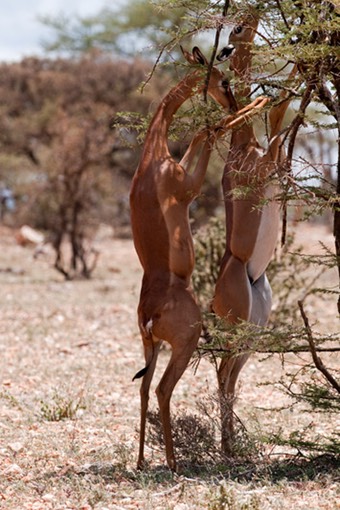
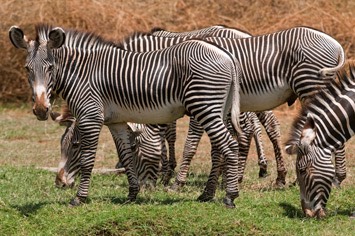
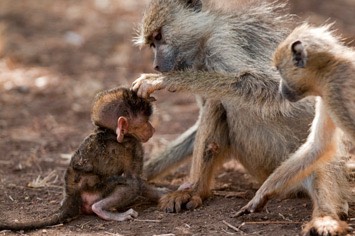
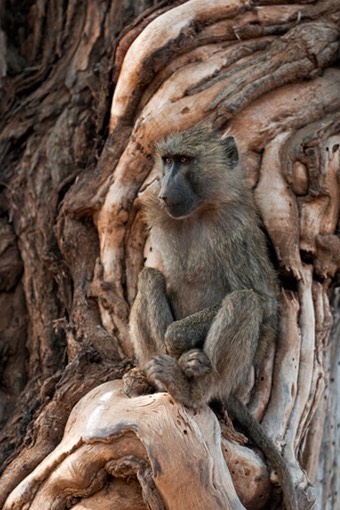
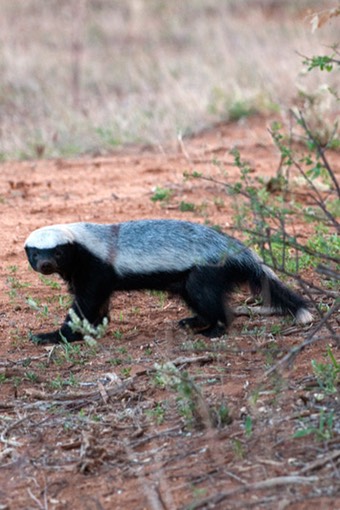
Maren's birthday was celebrated in Samburu. For dinner, our cook Charles dressed up in his white chef's jacket and with a special song and dance presented a large, decorated birthday cake. But it was rock hard and impossible to cut, and after much laughter Charles revealed that it was in fact a big lump of dried elephant poo covered with chocolate! Of course he had baked a real cake too (above right) so we didn’t have to nibble the icing from the poo-cake! Our regular dinner guest the genet came to wish Maren a happy birthday, sniffing Mick’s feet on the way.
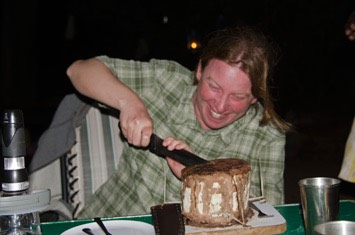
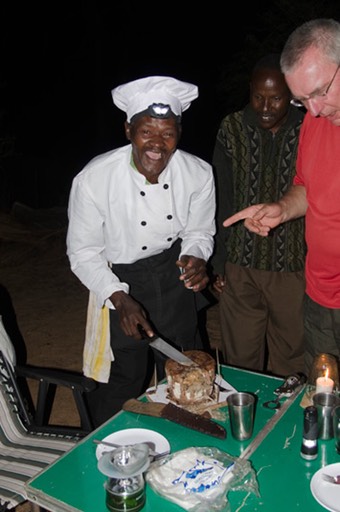
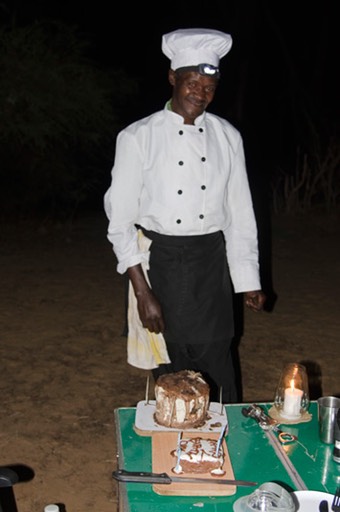
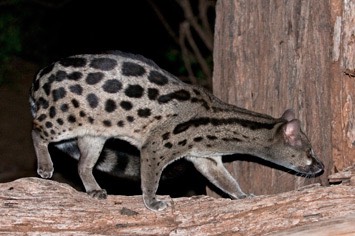
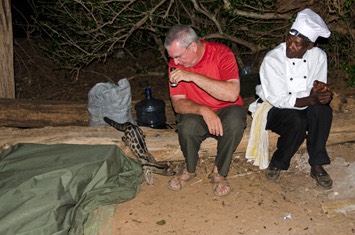
Filling stations are confined to larger towns, so in Archer's Post, we bought petrol in one-litre plastic bottles (above left)! Kenya's biggest highway from Nairobi to Mombasa is a single carriageway road; trucks, buses and cars overtake at will with little regard for oncoming traffic (top right), which makes driving quite stressful. The road passes through many small villages with little shops, like the goat butcher’s (bottom left), and small hotels (bottom right).
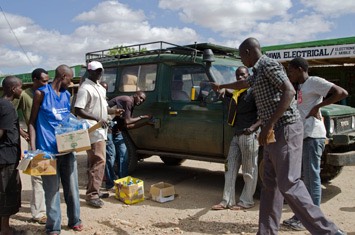

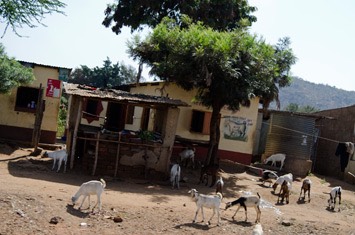
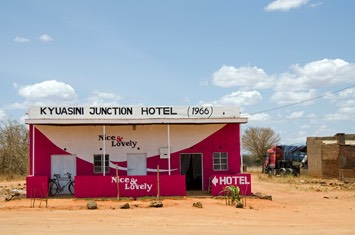
Tsavo East, the largest National Park in Kenya, is home to red elephants. They get this colour from the intensely red laterite soil. Despite the recent outrageous upsurge in poaching, there are still some bulls with large tusks (top left and center), but many elephant families are very nervous of humans. These pictures are all of wild elephants, but in Tsavo East we visited the two reintroduction centres run by the David Sheldrick Wildlife Trust where orphaned elephants are returned to the wild. The DSWT is doing a fantastic job, working closely with the Kenya Wildlife Service to combat poaching as well as caring for the orphans.
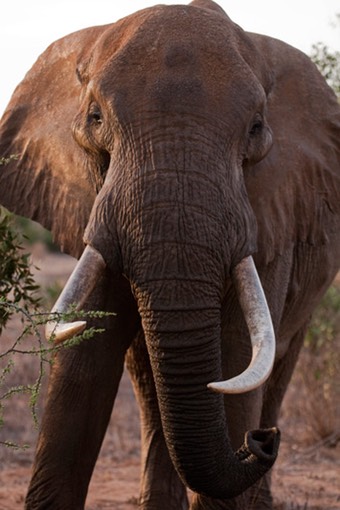
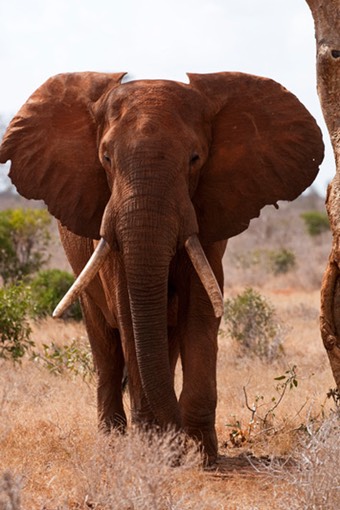
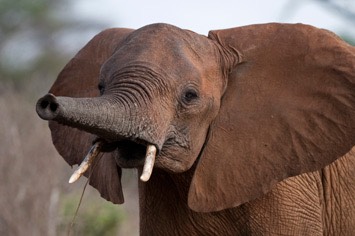
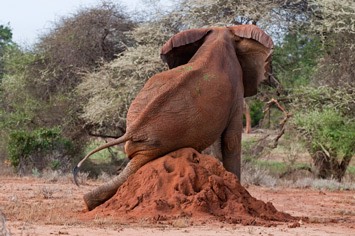
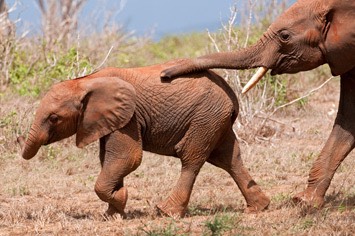
As a special treat we had booked two nights in Ithumba camp in northern Tsavo East. This eco-friendly camp run by the David Sheldrick Wildlife Trust (www.sheldrickwildlifetrust.org) is located close to their Ithumba reintroduction unit, to which those staying at the camp get privileged access. The camp has a large thatched building with living and dining room (above), and three two-person tents (bottom left) with al fresco bathrooms (bottom right). After three weeks in the bush this was pure luxury!
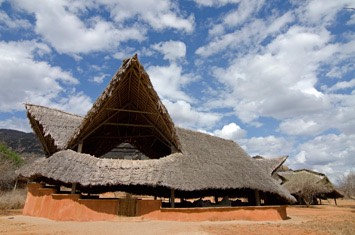
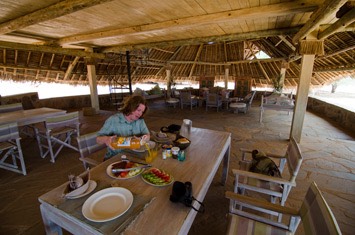
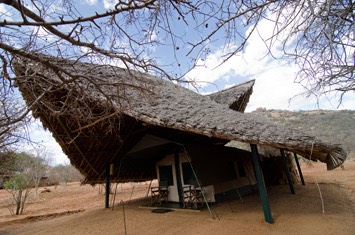
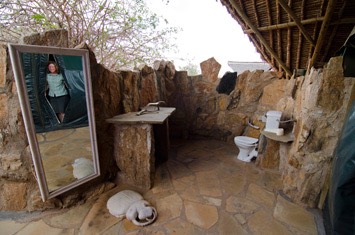
The young orphan elephants in Ithumba are between two and four years old, and are still fed with milk bottles three times a day. The bottles are guzzled in seconds! Some have even mastered the knack of holding the bottles themselves. In the DSWT’s other reintroduction centre at Voi we had the opportunity to feed the young orphans ourselves - Mick fed the little bull Tassia, while Maren fed a little female called Kenia.
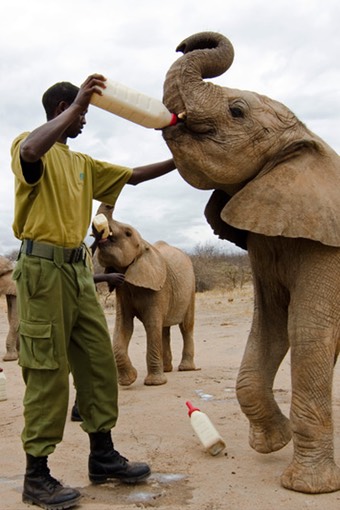
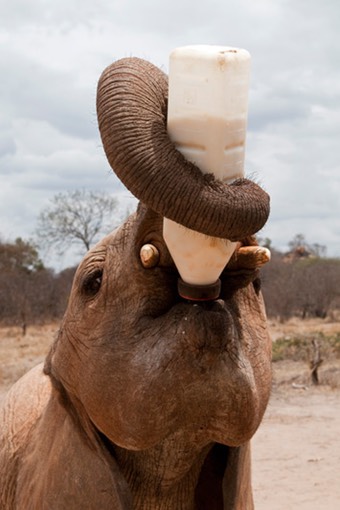
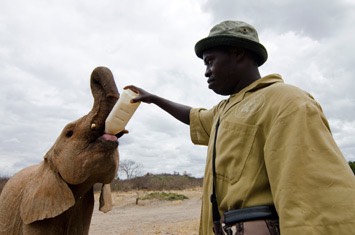
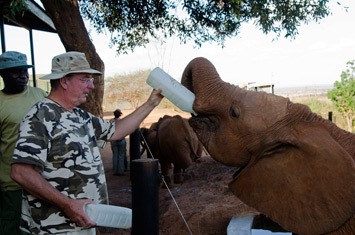
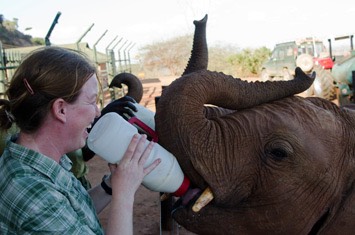
The highlight of the day at Ithumba is the mud bath, a ritual we were able to attend three times. Some orphans immediately jump into the mud hole and wallow to their heart’s content, while others are more hesitant and seem to prefer not to get so dirty. For the elephants it’s a delightful unrestrained romp; they can immerse themselves completely, squirt mud around and push each other in. As a spectator one has to keep a careful lookout to make sure one doesn't end up as muddy as the little elephants!
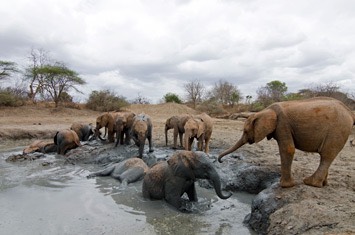
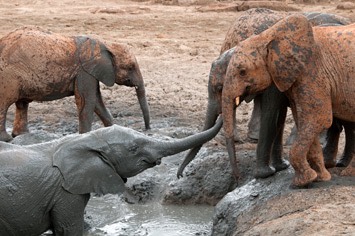
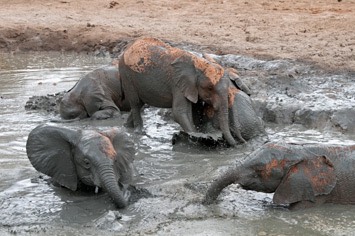
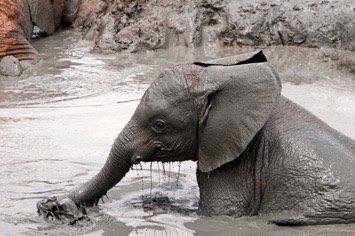
The mud treatment is followed by a good old-fashioned dust bath. For those that avoided the mud, this is frequently the only bath of the day; the mud and dust caking their skin protects against parasites and the sun. It also gives the elephant a lot of fun, and makes quite a spectacle as the deep red dirt is thrown around! The result is a herd of elephants in different colors - grey, brown, red, and any mixture thereof. At this stage some of the older, now wild ex-orphans often drop by to join in the fun (bottom right).
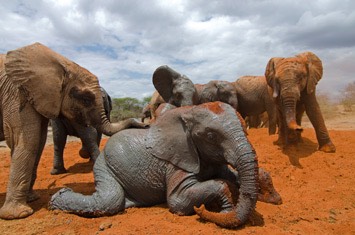
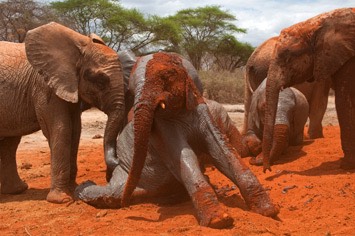
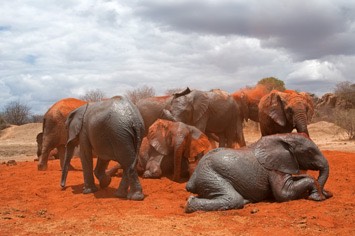
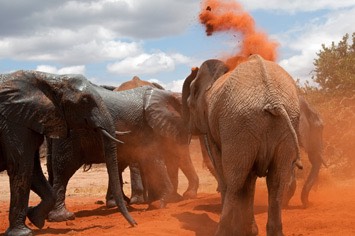
After the mud and dust baths we could mingle with the elephants and try to identify those we had adopted. Above is Kalama, who greeted Mick with a kiss on the hand. Our cameras were irresistible to the young eles, some of whom seemed to be budding photographers, or was it film stars? While the little bulls were particularly interested in pushing, shoving and arm wrestling, the little elephant ladies were quite cuddly – bottom right is Melia, adopted by Maren's mother.
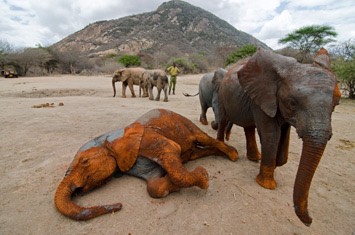
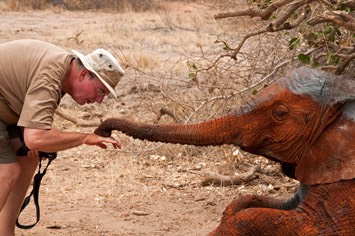
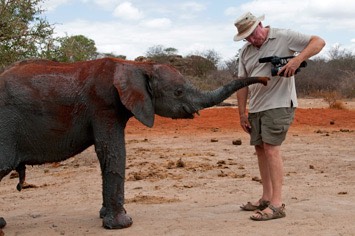
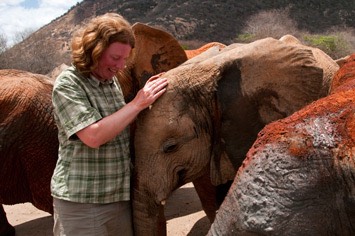
Some of the larger ex-orphans remained very affectionate. Nasalot (top left), a nearly 12-year-old female, enjoyed a cuddle and even Kora (top center and right), an 7-year old bull already with stately tusks, liked a pat on the head. At the orphanage in Nairobi, we welcomed the new arrival Rombo (bottom left), introducing ouselves elephant-style by gently blowing in his trunk. Even at two years of age, baby elephants still like to suck on fingers, so Sities grabbed Maren’s hand and shoved it into her mouth (bottom right)!
